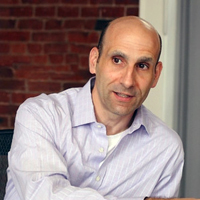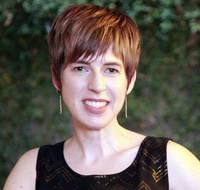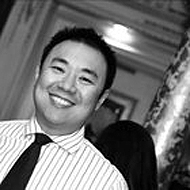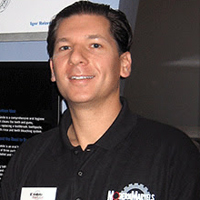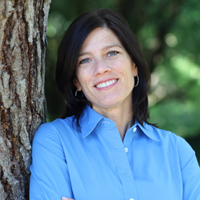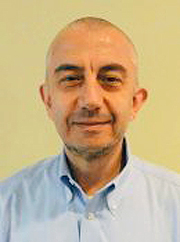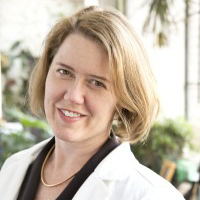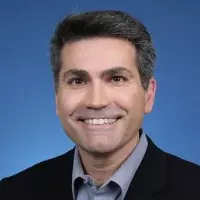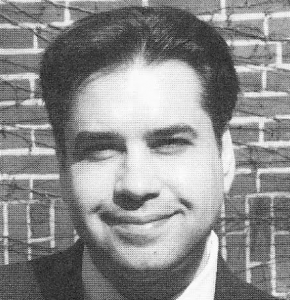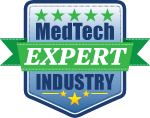One of the most highly sought after goals of any new, growing company is being able to profitably and efficiently scale the business. This is true for virtually any business in any industry and the medical device and technology industry is no exception. However, in such an industry where there are unique requirements and regulations, special challenges will inevitably exist when scaling the business, above and beyond what most growing companies would face.
When trying to scale, new companies in the medical device and technology industry will likely face all of the same general business scaling challenges as any other business: building capital, defining goals, creating infrastructure, obtaining sales, and delivering consistent value. In addition, they may also potentially face a number of other complex scaling challenges including but not limited to: consistent fundraising, compliance and regulations requirements, industry culture, research and development, and innovation.
As a company that manufactures products that are relevant to the medical device and technology industry, we at Pannam Membrane Switches wanted to learn some helpful business tips for those who are striving to grow in this industry, and specifically, how medical device and medical technology industry professionals can avoid the most common (and avoidable) mistakes that might impede the growth of their business.
To do that, we obtained the advice of 13 medical device professionals and medical technology business experts the following question:
“What’s the #1 challenge companies in the medical device/medtech industry face when trying to grow/scale their businesses (and what can they do to overcome it)?”
We’ve collected and compiled their expert advice into this comprehensive guide to help medical technology professionals grow their business more confidently and effectively. See what our experts said below.
Meet Our Panel of Medical Technology Experts:
Did you participate on our panel? Get a custom badge HERE.
The Top Challenge MedTech Companies Face When Scaling
 Joseph V. Gulfo, MD, MBA
Joseph V. Gulfo, MD, MBA
Joseph V. Gulfo, MD, MBA is the CEO of Breakthrough Medical Innovations, a team of industry experts specializing in Biopharma/Medtech product and commercial development, sales and marketing, regulatory (FDA and CE), quality, and policy advocacy. Prior to this, he served as President & CEO (and later Chairman of the Board) at MELA Sciences. Dr. Gulfo is the author of “Innovation Breakdown: How the FDA and Wall Street Cripple Medical Advances”. He has more than 25 years of experience in the biopharmaceutical and medical device industries where he has successfully submitted new product applications to and won approval from the FDA, three times, once in each category: biologic (monoclonal antibody for prostate cancer – BLA), drug (chemotherapeutic for bladder cancer – NDA), and device (point of care melanoma diagnostic – PMA).
For many businesses in the medical device industry, the problem lies in… Establishing CRM and ERP, debugging them, having employees well-trained, and using them as a matter of rote BEFORE the growth phase commences. Putting these systems in place in the pilot or early phases takes DISCIPLINE on the part of the entire organization, as well as unwavering leadership and foresight.
During the early stages, implementing these systems is extremely difficult for small companies that have developed a breakthrough innovative product for six primary reasons:
1. PEOPLE – small product-focused companies often do not have employees who are schooled in these systems, rather, as the product emerges from development phases to early commercial success, the engineers and medical people are re-tooled to help bring the product to market, however, they are not disciplined in CRM and ERP;
2. “By hand” is easier for the organization and BETTER for the customer in the current phase. CRM and ERP, of course, are better for the later phases;
3. Organizational Inertia – since the “new way” has not been proven in the organization, there is a strong tendency to continue to do that which made the company successful to date;
4. Fear of the unknown
5. Disruption of the culture – CRM and ERP are cold and insensitive, as well as unforgiving.
If the company was entrepreneurial, this change WILL cause culture shock. Advanced warning, communication, and strong leadership is required to help an organization transition from its “old ways” to the new scalable and trackable business methods that will propel it forward.
 Ursula Hessenflow
Ursula Hessenflow
Ursula Hessenflow is the Co-founder and CEO of myLAB, the first service empowering users to take control of their health by testing for STDs at home. Ursula also Co-founded A Hundred Years, a leading digital strategy and web development agency, and Channel Factory, a pioneer in online video distribution, instrumental in growing to 40+ employees and $7.5 million gross in 3 years on pure revenue growth. She has worn every hat as a founder and has help leadership roles in operations, account management/client services, product management, marketing, finance and strategic planning. Clients include: NASA, Sony, Nestle, Coke and many Fortune 100 brands.
Every company in the medical device/med tech space is going to have to face regulatory challenges from FDA, HIPAA, CLIA and in some cases individual state regulatory authorities. The best advice that we have been given is to…. Do your homework. Make sure you have done everything you possibly can to understand the law and meet regulatory requirements.
Someone, somewhere may feel you are doing something wrong, especially if what you are doing is new and innovative. Expect that you might get a call from a regulatory agency with questions or with claims that you didn’t do something according to regulations. In that case, just be prepared to make your case as to why you believed you were following regulations. You are allowed to challenge their claims if you feel you are in the right, but if they reject your claims, you will usually have a grace period to become compliant. As we learned from 23andme, the worst thing that you can do is avoid regulatory authorities.
 Jason Wang
Jason Wang
Jason Wang is the CEO of TrueVault, a secure, HIPAA compliant API that allows providers to create this accessibility without large scale IT investment on their part. It removes this friction point and enables them, and 3rd party devices that require access to the data, to provide a better patient experience and care.
The biggest challenge to scale for companies in this industry is… The ability to integrate with existing players to create real value for the end users of their products. An innovative patient care solution can’t easily access patient records in a secure and compliant manner.
Providers, even if they’re eager to provide the data, have antiquated systems and limited technical resources to build the connections to their data. This limits the utility for smart devices that rely on this data and makes it difficult for them to grow. When providers can more easily make their patient data available in a secure and scalable way, more medical device and application makers can leverage that data more quickly, driving utility and ultimately faster adoption and scale across the industry.
 Rod Brown
Rod Brown
Rod Brown is the COO of OnceLogix, a minority-owned and operated software company that specializes in web-based solutions (software-as-a-service) for the health care industry. The nine-year-old, Winston Salem-based company focuses on the behavioral health care category with its signature product – ShareNote.
As company in the healthcare tech industry, among the #1 challenges my company has faced is… Getting medical practices, primarily in the behavioral care industry, to transition from their traditional paper-intensive environments to using web-based tools.
Many practices are comfortable with their current systems just because that’s the way they’ve been doing business, in many cases, for decades. My company and business partners have been able to overcome these challenges by showing our clients in the medtech industry how they can better manage and respond to patients’ needs.
 Aekta Patel
Aekta Patel
Aekta Patel serves as General Counsel and Chief Regulatory Officer at AccelSPINE, and her role includes overseeing FDA submissions for new devices. AccelSPINE has received eight clearances for spinal implants from the USFDA in the last two years. Patel also is responsible for AccelSPINE’s patent portfolio, which encompasses a variety of applications for new and advanced spinal implants and instruments. One highlight of Patel’s contributions to AccelSPINE includes the spinal systems naming concept based on influential artists. Prior to AccelSPINE, Patel was a chemical engineer and compliance engineer at a large chemical company in Indianapolis. She also was an associate patent attorney at law firms in Pennsylvania and Florida, and worked for five years with patent prosecution law firms on the east coast specializing in biotechnology and medical devices.
Several challenges face the medical device/technology industries today, beyond the ordinary product development and sales/marketing that other markets contend with. As medical device manufacturers, the main difficulty we face as we try to grow our business is… Compliance and regulatory governance, which can be tedious, complex and costly.
There really isn’t a secret to overcoming the regulatory or the compliance challenges, except to maintain proper in-house personnel and knowledgeable consultants. At AccelSPINE we have full-time staff dedicated to overseeing the compliance division as well as highly competent consultants who guide us along the way in regulatory matters. Of course maintaining the programs, which are laid out in both of these divisions requires constant supervision and commitment to proper and thorough record-keeping. For example, programs such as our QA/QC system must be detailed and thorough and requires consistent updates.
Our team must remain vigilant and familiar with any changes to rules and requirements. Thus, like in many industries and in the end, having the right people is the key.
 Dr. Igor Reizenson
Dr. Igor Reizenson
Dr. Igor Reizenson is the founder and CEO of ClearSmile LLC. He received his DDS from the State University of New York at Buffalo School of Dental Medicine in 2001, and then advanced to the prestigious General Practice Residency Program at Veterans Hospital of Western New York. Upon completion, Dr. Reizenson relocated to Atlanta, Georgia and worked for a mobile dentistry group called Help A Child Smile that primarily cares for underserved children all across the state of Georgia. As one of the owners of iSmile, a technology forward dental office, he is a routine volunteer for Give Kids A Smile Day. Dr. Reizenson is certified in the use of Cerec technology for single visit all ceramic restorations, as well as certified in placing and restoring dental implants. In 2007 Dr. Reizenson was recognized by the History Channel’s “Modern Marvels” as one of America’s top 25 inventors of the year for a patented oral hygiene device called ClearSmile.
The biggest problem most businesses in this industry face when trying to grow, including my own company CLEARsmile, is… Fundraising.
Once you have a patent and you are looking to create a functional prototype, the first step is creating an alpha prototype. This version of the product is generally going to be clunky, ugly and for the most part, non-functioning. It’s meant to give someone else an idea of what the product will eventually be capable of, and this process usually requires time and money from the inventor.
The big financial hump is moving from the alpha prototype stage to the beta prototype, where most people get stuck in the process. At this point, the inventor needs to be meeting with venture capital and angel investors. The cost of developing a beta prototype is high, ranging from one hundred thousand dollars up to one million. The beta prototype is a nearly complete product that needs FDA approval along with user testing and feedback from a small group of potential customers.
Finding investors is also much easier once you have created a beta prototype, since you are able to present a more complete product – It’s creating the beta prototype that is the hard part. Fortunately at that point, you are 85% finished with the process at this point and it’s easy from there.
 Stacey Epstein
Stacey Epstein
Stacey Epstein is Chief Marketing Officer at ServiceMax, which provides software solutions for field service. Stacey is responsible for building and overseeing the company’s global marketing function. Stacey has two decades of SaaS, CRM, Service Management, and enterprise application experience. Previously, Epstein was vice president of Global Marketing Communications at SuccessFactors, where she pioneered the marcomm function and was instrumental in the company’s successful IPO in 2007.
For many businesses in the medical device industry, one of the biggest challenges is… The safe, physical maintenance of medical products. Medical devices must be serviced with speed and efficiency.
These expensive machines are in hospitals isolated across the country, and when something breaks, technicians need to service them immediately. Every hour the machine is down, lives can be lost, treatments are prolonged, and patients are left stressed and uncomfortable. When technicians are on-site, they need to be quick and knowledgeable in order to save both money and lives. This aspect of technical maintenance is something my company deals with directly in the mobile field service space. A mobile field service platform allows technicians to have parts manuals, customer histories, and collaboration tools necessary to communicate with experts, regardless of their location or access to wireless.
 Dr. Orhan Soykan
Dr. Orhan Soykan
Dr. Orhan Soykan is an applied researcher and design engineer with extensive experience in the areas of instrumentation and medical devices. He is currently an adjunct faculty at the Biomedical Engineering Department of Michigan Technological University. Dr. Soykan’s career took him to engineering, academic and applied research, as well as business and product development positions at diverse organizations such as the Military Electronics Industries (ASELSAN), the U.S. Food and Drug Administration (FDA), Michigan Technological University, and Medtronic, Inc. where he served in Minneapolis and Tokyo. Learn more about Dr. Soykan at http://www.soykanenterprises.com.
For companies in the medical device manufacturing industry, one of the biggest challenges companies face as they scale is… Product differentiation and resources.
Due to the requirement to demonstrate the safety and efficacy of their therapy, usually with preclinical and clinical trials followed by a regulatory approval process, the medical device companies spend a long time and significant resources before they can bring their products into the market place.
This lengthy process not only depletes their cash reserves, but also puts them at a significant disadvantage by forcing them to expose their technology to their competitors even before they have a chance to launch their product and earn some returns on their investments. When they finally launch their new product, they find out that their competitors are only a few steps behind, following the path they have carved. Hence, a medical device manufactured by one company is usually very similar to another manufactured by a competitor. Without significant product differentiation, growth becomes difficult to achieve.
A potential solution to this problem is to continue with the R&D efforts to develop the next generation of the products, even before the first generation product is launched. By assuring that the products in the subsequent generations are substantially equivalent to the initial breakthrough product, one can make sure that the later regulatory cycles would be shorter, allowing the company to remain always few steps ahead of their competitors. The best way to grow is to gain and maintain market share which is much easier to do when the competitor is not in the market Another solution is to incorporate the voices of the marketing, regulatory and legal (IP) teams from day 1 of the R&D program. This usually makes the start of the project slower, but in the long run allows the firm to enter the market earlier, while the competitor is still waiting for regulatory approval or trying to negotiate IP rights.
 Dr. Amy Baxter
Dr. Amy Baxter
Amy Baxter is the Founder of MMJ Labs, a company dedicated to personal pain control and makers of the Buzzy line of products. As a pain researcher, when her son had unnecessarily traumatic routine vaccinations, she knew there must be a better way. Dr. Baxter invented, tested, got over 1M in grant funding, researched, and ultimately developed manufacturing for Buzzy and other Personal Pain Products.
As a medical device manufacturer, the number one barrier to scaling is… The slow speed of the medical industry.
Executing a start-up is like playing jazz- the ensemble moves fast, and the notes you don’t play are as important as those you do. We’ve recently started discussions with large companies who are used to working as a symphony. Many many instruments, and even the warm up takes a while.
For us, scaling is making fast partnerships with companies where pain management matters to their market. Give each patient a Buzzy, and they may not skip doses. Offer Buzzy in the lab, and your competitive advantage is clear. Unfortunately, everyone wants an exclusive, and deciding whether to go with the big company that takes longer or the small company that can move fast is a tough call. To promote harmony, we’re concentrating on working with the number two or three in an industry. They may need our technology more than the industry on top, and may be more flexible. While everyone dreams of playing Carnegie Hall, getting a steady stream of niche gigs is helping us scale in a timely way that supports cash flow.
 Blessing Egbon
Blessing Egbon
Blessing Egbon is CEO of ahoyDoc, a real time online chat service for care provider’s websites.
The number one challenge in scaling a medical technology company is… Being able to get meaningful time with practitioners or their office staff.
What many don’t realize is that practitioners will often be treating multiple people at the same time cycling through various patients rooms while nurses prep and release patients. After trying various sales methods including walk-in, cold calling, emailing marketing, etc. I’ve found that calling and scheduling a conference call to talk able solutions not just your service that can increase appointments, sales, or performance tend to land on the practitioners calendar. They like advice just like the next person so give it to them and promote yourself in the process.
 Clay Colbath
Clay Colbath
Clay Colbath is the Director of Marketing and Sales at ShareIntel, an application service provider retained by public companies to obtain, aggregate, track and analyze shareholder trading information.
For companies in the medical device manufacturing industry, one of the biggest challenges companies face as they scale is… Maintaining adequate capital.
We know that as companies involved in the development of new devices, therapies and drugs burn through capital, they become easy targets for short sellers and other related kinds of attack. The biggest challenge is to avert the negative consequences of the periodic volatility that these “actors” create deliberately in the companies stock. The critical question is how to maintain stability and best manage the market cap expectations and build long-term shareholder relationships.
 Peter Alexander
Peter Alexander
Peter Alexander, PhD has over 30 years of sales and marketing experience, the majority of which has been in the medical device industry. In addition, he is an award-winning Professor of Marketing and a successful digital marketing strategist. He currently serves as Senior Manager, Digital Marketing for Omnicell, Inc.
The #1 challenge companies in the medical device/med tech industry face when trying to grow/scale their businesses is… Overcoming the status quo when trying to generate new business.
Medical device companies typically focus on their competition when they are vying for new business. However, the competition is typically a secondary challenge to getting the prospect to change what they currently are doing or switch from the solution they have. The responsibility rests with the medical device company to properly train their sales and marketing personnel to teach prospects something they don’t know, or something they should be aware of, in order to do their jobs more effectively. These insights should be followed with messaging that demonstrates how the company’s products can uniquely address the situation. The medical device companies that can do this will be successful closing new business.
 Dr. Vincent LaRosa
Dr. Vincent LaRosa
Dr. Vincent LaRosa is the director of the Healthcare IT Practice for Eliassen Group, the 19th largest IT staffing and consulting services company in the United States, according to the annual rankings as comprised by Staffing Industry Analysts’ Magazine. Vincent has been a healthcare information technology professional since 1993 and has served as an interview subject and contributor to Science and Scientific American Magazines.
In my professional experience in the healthcare technology industry, I feel that the biggest challenges to scaling lie in… Research and development, and in keeping the products current.
But more often than not, proper quality assurance, coupled with honest and robust product testing, can prevent huge reversals in fortune. The current trend in recalls and lawsuits, however, negates all the forward momentum a company can muster.
MedTech Industry Expert Badge
If you’re one of our experts, let others know about it and display a custom badge on your site. Simply copy the code beneath a badge and paste it onto your website!

